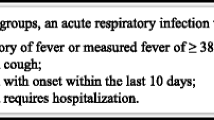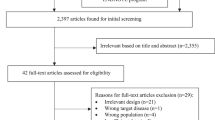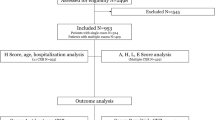Abstract
A chest infiltrate is needed to make a diagnosis of community-acquired pneumonia, but chest X-rays might be time consuming, entail radiation exposure, and demand resources that are not always available. We sought to derive a model to predict whether a patient will have an infiltrate on chest X-ray (CXR). This prospective observational study included patients visiting the Emergency Department of Beilinson Hospital in the years 2003–2004 (derivation cohort) and 2010–2011 (validation cohort), who had undergone a CXR, and were suspected of having a respiratory infection. We excluded all patients with possible healthcare associated infections. A logistic regression model was derived and applied to the validation cohort. A total of 1,555 patients met inclusion criteria: 993 in the derivation cohort and 562 in the validation cohort with 287 (29%) and 226 (40%) having an infiltrate, respectively. The derivation model area-under-the curve (AUC) was 0.79 (95% CI 0.76–0.82). We categorized the patients into three groups—presence or absence of infiltrate, or undetermined. In the validation cohort, 70 (12%) patients were classified as ‘no infiltrate’; 3 (4%) of them had an infiltrate, 367 (65%) were classified as ‘infiltrate’; 190 (52%) of them had an infiltrate on CXR, and 125 (46%) were classified as ‘undetermined’; 33 (26%) of them with an infiltrate on CXR. Using this prediction model for the evaluation of patients with suspected respiratory infection in an ED setting may help avoid over 10% of CXRs.


Similar content being viewed by others
References
Fine MJ, Smith MA, Carson CA, Mutha SS, Sankey SS, Weissfeld LA et al (1996) Prognosis and outcomes of patients with community-acquired pneumonia. A meta-analysis. JAMA 10(275):134–141
Ewig S, Birkner N, Strauss R, Schaefer E, Pauletzki J, Bischoff H et al (2009) New perspectives on community-acquired pneumonia in 388 406 patients. Results from a nationwide mandatory performance measurement programme in healthcare quality. Thorax 64:1062–1069. https://doi.org/10.1136/thx.2008.109785
Ewig S (1999) Community-acquired pneumonia: definition, epidemiology, and outcome. Semin Respir Infect 14:94–102
Mandell LA, Wunderink RG, Anzueto A, Bartlett JG, Campbell GD, Dean NC et al (2007) Infectious diseases society of America/American thoracic society consensus guidelines on the management of community-acquired pneumonia in adults. Clin Infect Dis Off Publ Infect Dis Soc Am 1;44(2):S27–S72. https://doi.org/10.1086/511159
Cao AMY, Choy JP, Mohanakrishnan LN, Bain RF, van Driel ML. 2013 Chest radiographs for acute lower respiratory tract infections. Cochrane Database Syst Rev CD009119. https://doi.org/10.1002/14651858.CD009119.pub2
Basi SK, Marrie TJ, Huang JQ, Majumdar SR (2004) Patients admitted to hospital with suspected pneumonia and normal chest radiographs: epidemiology, microbiology, and outcomes. Am J Med 1(117):305–311. https://doi.org/10.1016/j.amjmed.2004.03.029
Hagaman JT, Rouan GW, Shipley RT, Panos RJ (2009) Admission chest radiograph lacks sensitivity in the diagnosis of community-acquired pneumonia. Am J Med Sci 337:236–240. https://doi.org/10.1097/MAJ.0b013e31818ad805
Infantino A, Infantino R (2013) The debated problem of community-acquired pneumonia diagnosis: many guidelines, any guideline? Prim Care Respir J 22:383–385. https://doi.org/10.4104/pcrj.2013.00096
Levy ML, Le Jeune I, Woodhead MA, Macfarlaned JT, Lim WS (2010) British Thoracic Society Community acquired pneumonia in adults guideline group. Primary care summary of the British Thoracic Society guidelines for the management of community acquired pneumonia in adults: 2009 update. Endorsed by the Royal College of general practitioners and the primary care respiratory society UK. Prim Care Respir J 19:21–27. https://doi.org/10.4104/pcrj.2010.00014
Moran GJ, Rothman RE, Volturo GA (2013) Emergency management of community-acquired bacterial pneumonia: What is new since the 2007 Infectious Diseases Society of America/American Thoracic Society guidelines. Am J Emerg Med 31:602–612. https://doi.org/10.1016/j.ajem.2012.12.002
R Core Team. R: 2015 A Language and Environment for Statistical Computing [Internet]. R Foundation for Statistical Computing, Vienna, Austria https://www.R-project.org/
Harrel FEJ (2016) rms: Regression Modeling Strategies. Available at: http://CRAN.R-project.org/package=rms. Accessed 17 October 2017
van Buuren S, Groothuis-Oudshoorn K (2011) mice: Multivariate Imputation by Chained Equations in R. Journal of Statistical Software [Internet]. https://www.jstatsoft.org/article/view/v045i03. Accessed 17 October 2017
Fine MJ, Auble TE, Yealy DM, Hanusa BH, Weissfeld LA, Singer DE et al (1997) A prediction rule to identify low-risk patients with community-acquired pneumonia. N Engl J Med 23(336):243–250. https://doi.org/10.1056/NEJM199701233360402
Lim W, van der Eerden MM, Laing R, Boersma W, Karalus N, Town G et al (2003) Defining community acquired pneumonia severity on presentation to hospital: An international derivation and validation study. Thorax 58:377–382. https://doi.org/10.1136/thorax.58.5.377
Ebrahimzadeh A, Mohammadifard M, Naseh G, Mirgholami A (2015) Clinical and laboratory findings in patients with acute respiratory symptoms that suggest the necessity of chest X-ray for community-acquired pneumonia. Iran J Radiol 12:e13547. https://doi.org/10.5812/iranjradiol.13547
Funding
This work was supported by the Rabin Medical Center Research Authority by the “young researcher grant”, and by the Israel National Institute for Health Policy Research Grant.
Author information
Authors and Affiliations
Corresponding author
Ethics declarations
Conflict of interest
All authors state they have no conflicts to disclose.
Ethical approval
Ethical approval was provided by the Rabin Medical Center institutional review board. Informed consent was waived by the institutional review board.
Additional information
Data availability: Data is not available due to restrictions in institutional policy.
Rights and permissions
About this article
Cite this article
Zusman, O., Farbman, L., Elbaz, M. et al. A decision support model to predict the presence of an acute infiltrate on chest radiograph. Eur J Clin Microbiol Infect Dis 37, 227–232 (2018). https://doi.org/10.1007/s10096-017-3119-0
Received:
Accepted:
Published:
Issue Date:
DOI: https://doi.org/10.1007/s10096-017-3119-0




